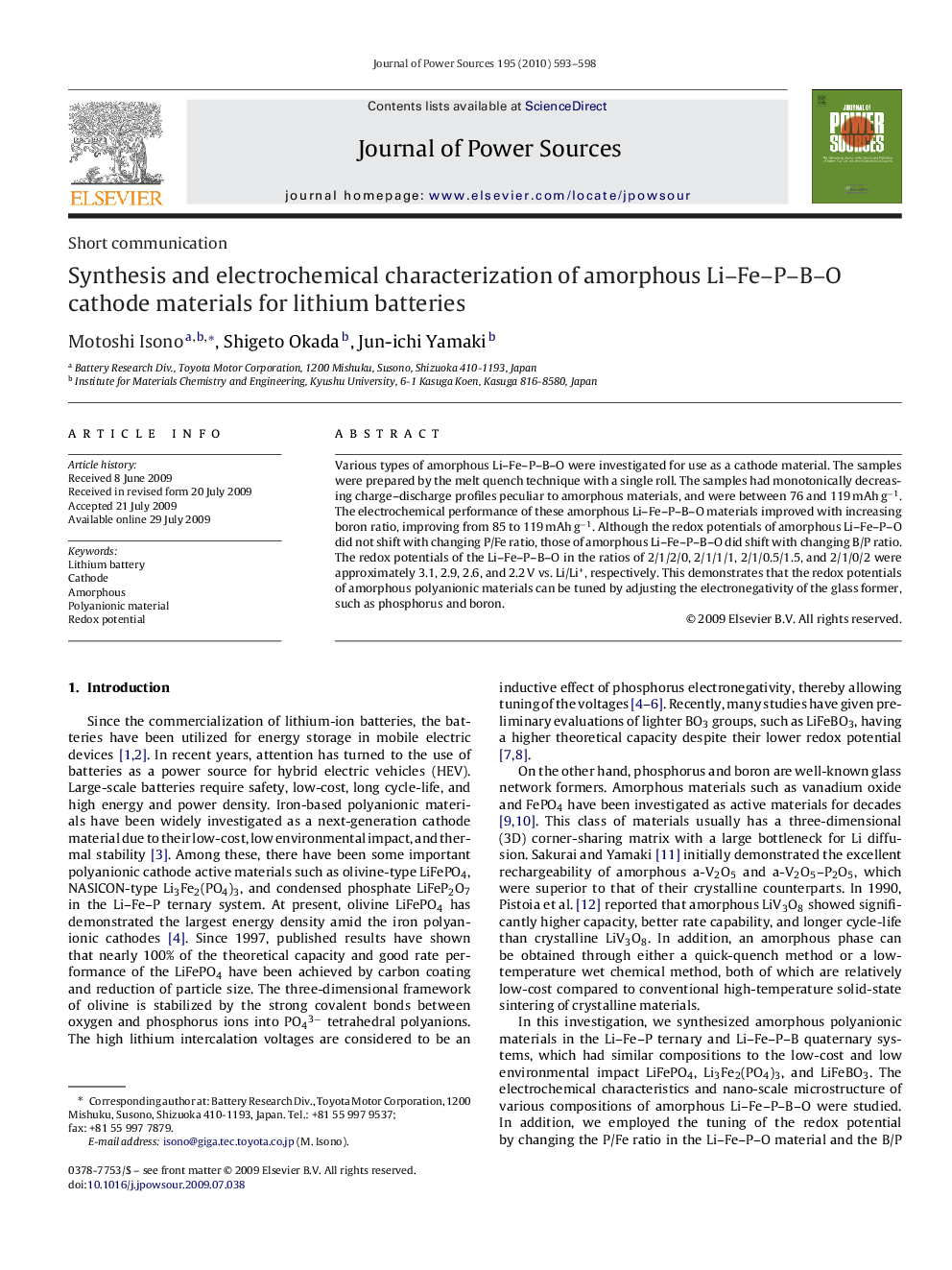| Article ID | Journal | Published Year | Pages | File Type |
|---|---|---|---|---|
| 1293910 | Journal of Power Sources | 2010 | 6 Pages |
Various types of amorphous Li–Fe–P–B–O were investigated for use as a cathode material. The samples were prepared by the melt quench technique with a single roll. The samples had monotonically decreasing charge–discharge profiles peculiar to amorphous materials, and were between 76 and 119 mAh g−1. The electrochemical performance of these amorphous Li–Fe–P–B–O materials improved with increasing boron ratio, improving from 85 to 119 mAh g−1. Although the redox potentials of amorphous Li–Fe–P–O did not shift with changing P/Fe ratio, those of amorphous Li–Fe–P–B–O did shift with changing B/P ratio. The redox potentials of the Li–Fe–P–B–O in the ratios of 2/1/2/0, 2/1/1/1, 2/1/0.5/1.5, and 2/1/0/2 were approximately 3.1, 2.9, 2.6, and 2.2 V vs. Li/Li+, respectively. This demonstrates that the redox potentials of amorphous polyanionic materials can be tuned by adjusting the electronegativity of the glass former, such as phosphorus and boron.
